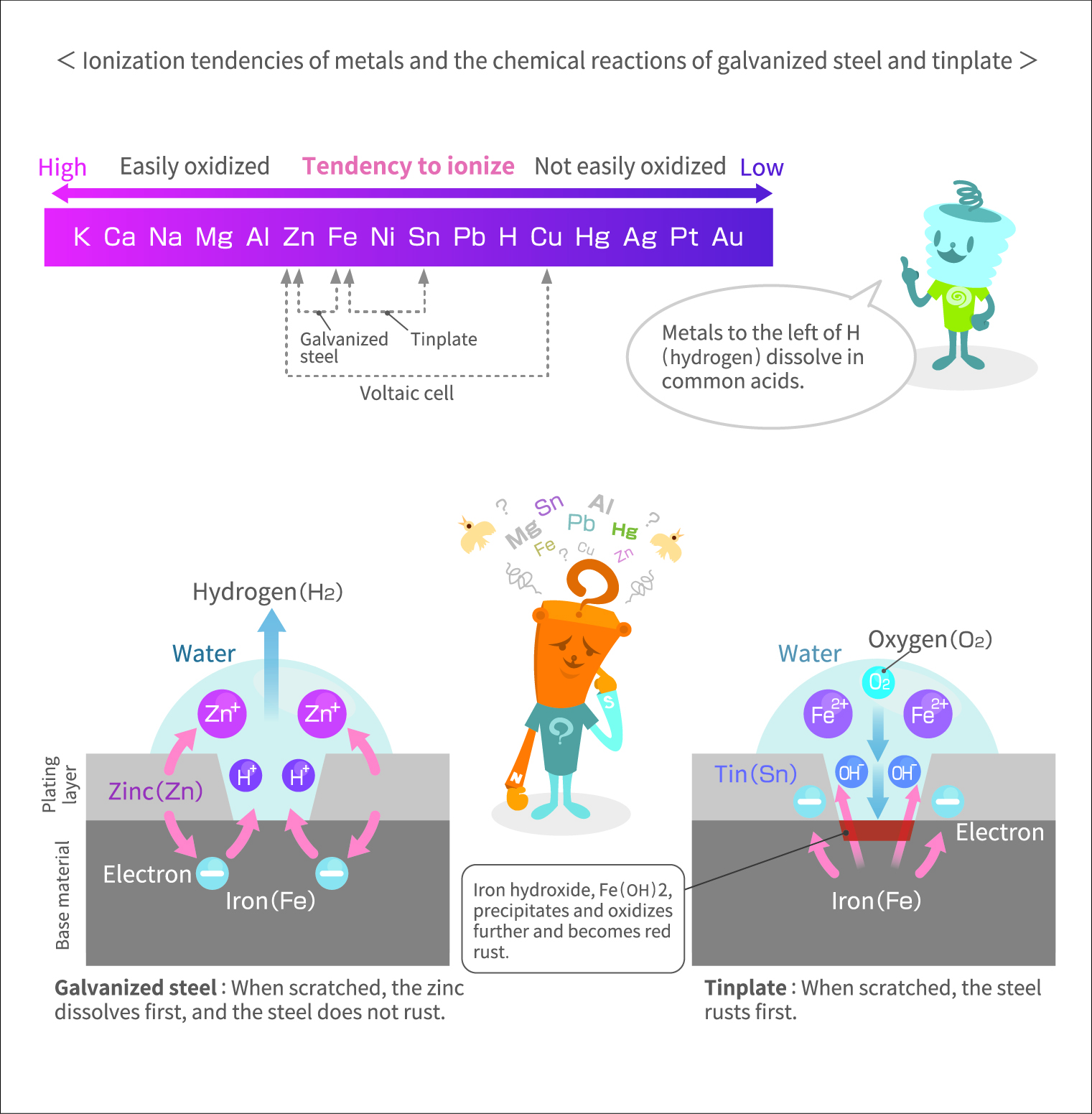The Wonders of Electromagnetism
How Lighting Originated the Field of Electronics

Cities at night glitter with a diversity of light sources, from incandescent to fluorescent, to mercury to neon. While lighting may seem to be a rather low-tech matter, it is actually a deep, sophisticated field of technology. Lighting, in fact, has been a key driver of the birth and development of electronics. Today, mobile phone displays and LCD TVs would be unusable without backlighting. On the other hand, lighting is under pressure to save more energy and resources, be environmentally friendlier, and have longer service lives. How will lighting technology evolve in the future?
- The connection between lighting and electronics

- From Yablochkov’s electric candle to the incandescent lamp

- Vacuum discharge research sparked the fluorescent lamp’s invention

- Side-mounted LEDs illuminate mobile phone screens

- TDK’s industrial power supplies underpin the brilliance of ultra-large LED displays

The connection between lighting and electronics
The relationship between lighting and electronics goes back to the nineteenth century. In 1815, Humphry Davy showcased the first electric light, the arc lamp. Performed in front of a large audience in England, he used a battery comprising 2,000 voltaic cells. Such batteries were impractical for commercial use, but steam-powered generators would eventually be developed, paving the way for arc lamps to be used in lighthouses, followed by factories, street lights, and other applications.
Arc lamps generated light from discharge sparks that occurred when a direct current voltage was applied across a gap between positive and negative electrodes. Since the electrodes gradually shortened as the sparks burned them off, the arc lamp needed some way to self-regulate this gap and prevent it from widening. The solution was a gear-based mechanism, similar to a clock, that pushed up the electrodes to maintain the correct gap. However, the device was poorly received due to its complexity.
The electric candle, invented by Russian engineer Pavel Yablochkov in 1876, overcame the shortcomings of the arc lamp. The electric candle was a variant of the arc lamp with an important difference: it was powered by alternating current instead of direct current. It featured two parallel electrodes, which discharged at the tips when a current was applied. Because of the alternating current, the two electrodes burned off at the same rate, eliminating the need to adjust the gap between the two. Electric candles typically consisted of four to six pairs of electrodes; when a pair burned out, the current continued flowing to the next pair of electrodes.
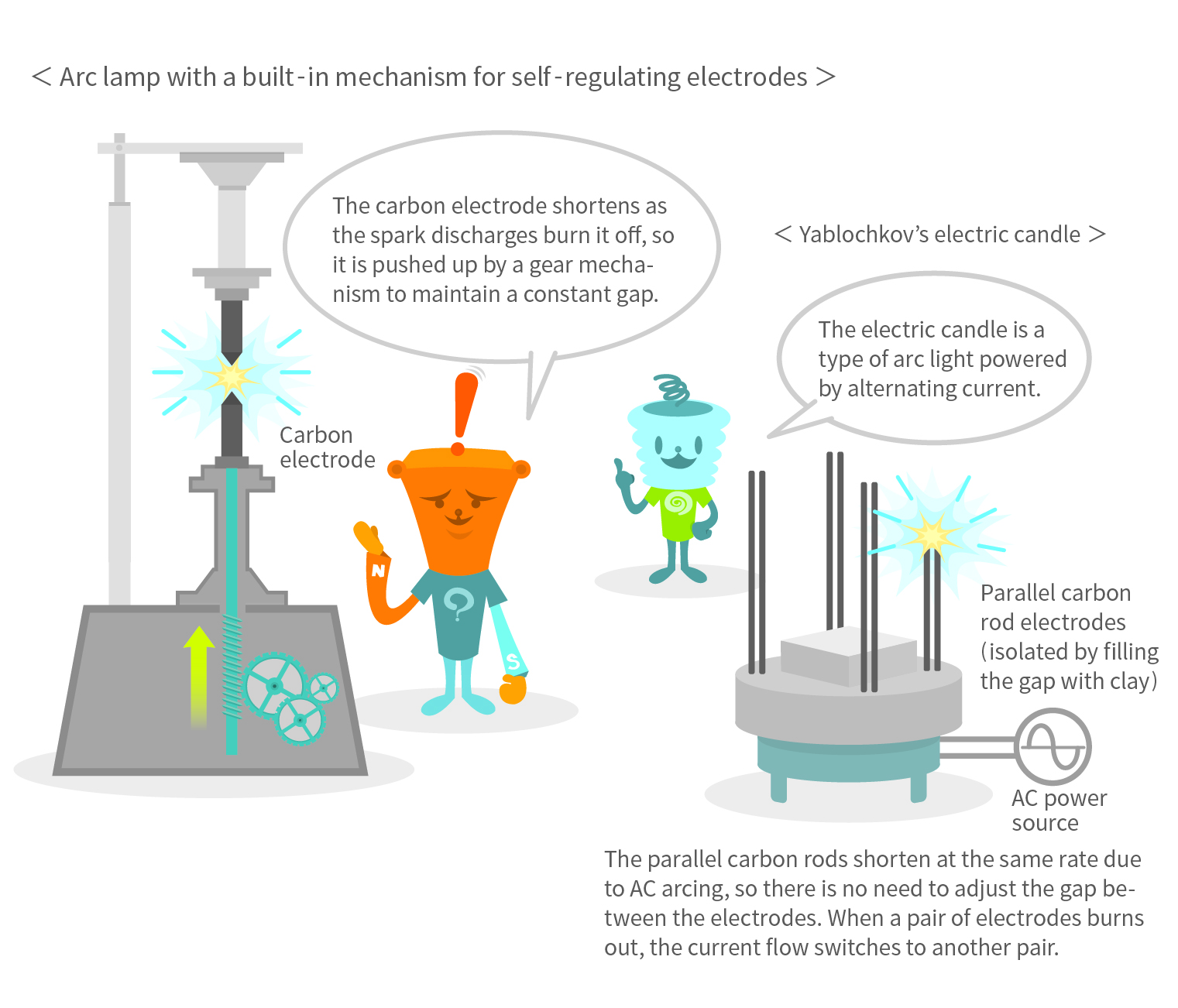
From Yablochkov’s electric candle to the incandescent lamp
Yablochkov’s electric candle provided continuous illumination for eight to twelve hours. Still, replacing the electrodes daily was inconvenient and uneconomical. Because arc lamps—including the electric candle—were too bright for indoor lighting and emitted harmful ultraviolet rays, research into incandescent lamps had been ongoing since the 1820s.
An incandescent lamp produces light when an electric current flows through a filament enclosed in a glass bulb. The filament, when subjected to intense heating due to its electrical resistance, begins to emit light. Ordinary metals are unsuitable for filaments because they tend to melt away at such elevated temperatures. Carbon, in contrast, has a very high melting point: approximately 3,500°C. This unique property led to the adoption of carbon wire as the filament in incandescent light bulbs, a breakthrough achieved by Joseph Swan in England and Thomas Edison in the United States.
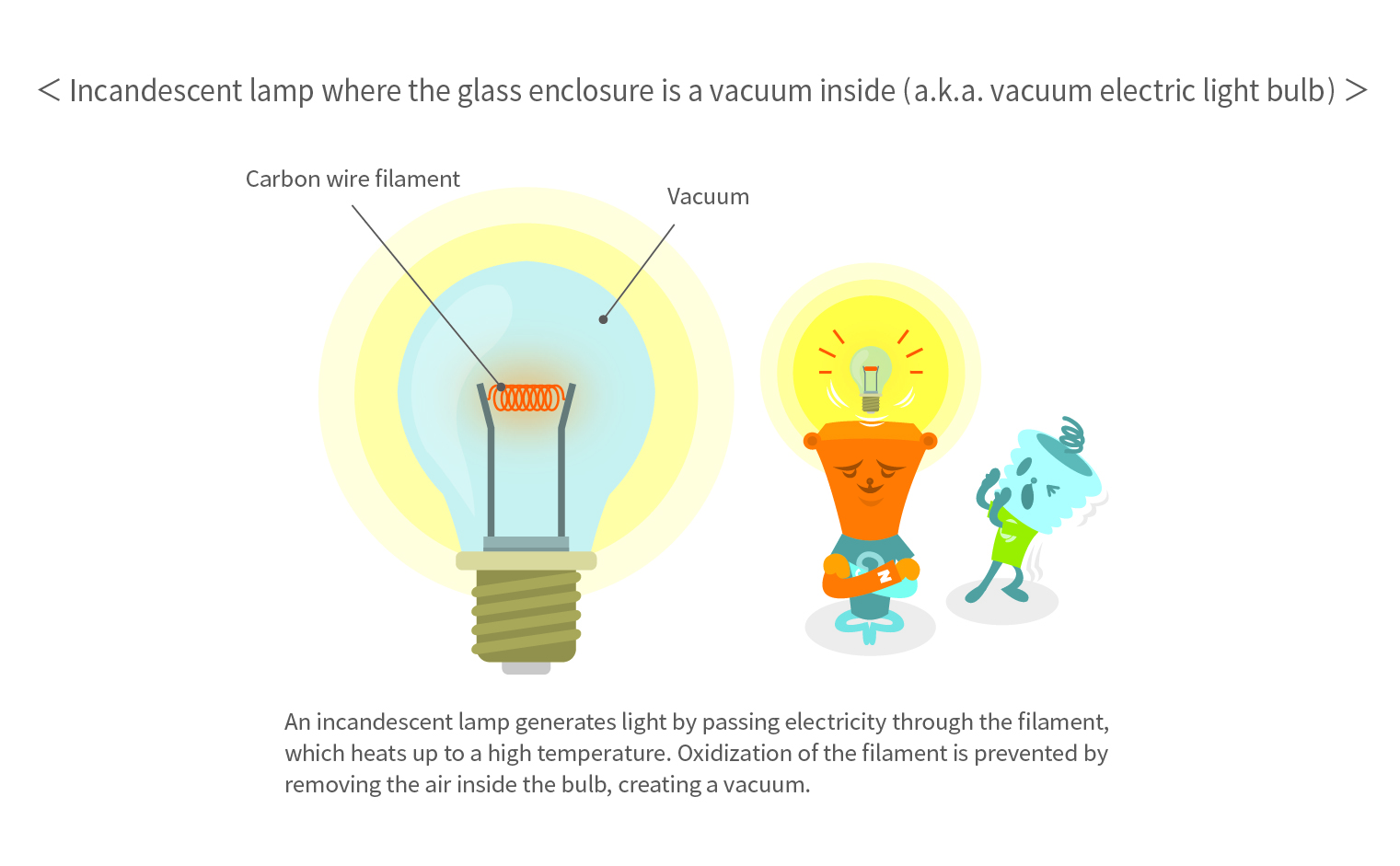
To extend the service life of incandescent lamps, it was necessary to remove the air inside the glass enclosure and create a vacuum to prevent the filament’s oxidation. Here, vacuum pumps played a critical role, which had just been developed to support research into electrical discharges inside vacuums, a cutting-edge field of physics at the time. Even then, early incandescent lamps were prone to breakage of the carbon filament due to vaporization if they were left on for extended periods. In 1883, while investigating this vaporization problem using a metal rod placed inside an incandescent lamp, Edison observed a current flowing between the filament and the rod, even in a vacuum and with a gap between them—a phenomenon that would later become known as the Edison effect.
John Fleming, who later became a technical advisor to the company founded by Edison, assumed responsibility for Edison’s work. Fleming came up with the idea of applying the Edison effect to stabilize radio receivers, leading to his invention of the vacuum (electron) tube in 1904. Because of their capacity to amplify and rectify electric currents, vacuum tubes became a common component in wireless transceivers and radios. The vacuum tube continued to evolve through the contributions of many researchers, becoming indispensable for electronic devices like the cathode ray tube in a television set and radar. Therefore, it is fair to say that the collective effort behind the development of the incandescent lamp marked the birth of electronics.
The role of the vacuum tube would eventually give way to the subsequent invention of the transistor (semiconductor), propelling the further advancement of electronics.
Vacuum discharge research sparked the fluorescent lamp’s invention
There are two types of discharge tubes: cold cathode discharge tubes, where a high voltage is applied to the electrodes to create discharges, and hot cathode discharge tubes, in which an electric current is passed through a filament acting as the cathode, generating hot electrons that travel toward the anode. Fluorescent lamps emerged from an extension of research into vacuum discharging.
A fluorescent lamp is a glass tube with an inner surface coated with a phosphorescent material. Mercury vapor is sealed inside the glass tube, and a discharge electrode (filament) is attached to each end of the tube. When a current is passed through the filament on one end and becomes heated, hot electrons are ejected and travel toward the electrode on the opposite end. These hot electrons collide with the mercury vapor, causing the vapor to emit ultraviolet rays. Although ultraviolet is invisible to the human eye, it induces the phosphor to generate visible light. This is the principle of fluorescent light emission. By varying the type of phosphor used, fluorescent lamps can be designed to glow in different colors, described by names like “extra warm (incandescent),” “warm white,” “neutral white,” “cool white,” and “daylight.”
Cold cathode tubes, such as those used as backlights in LCD TVs, work under the same principle as fluorescent lamps, except their electrodes emit electrons without filaments.
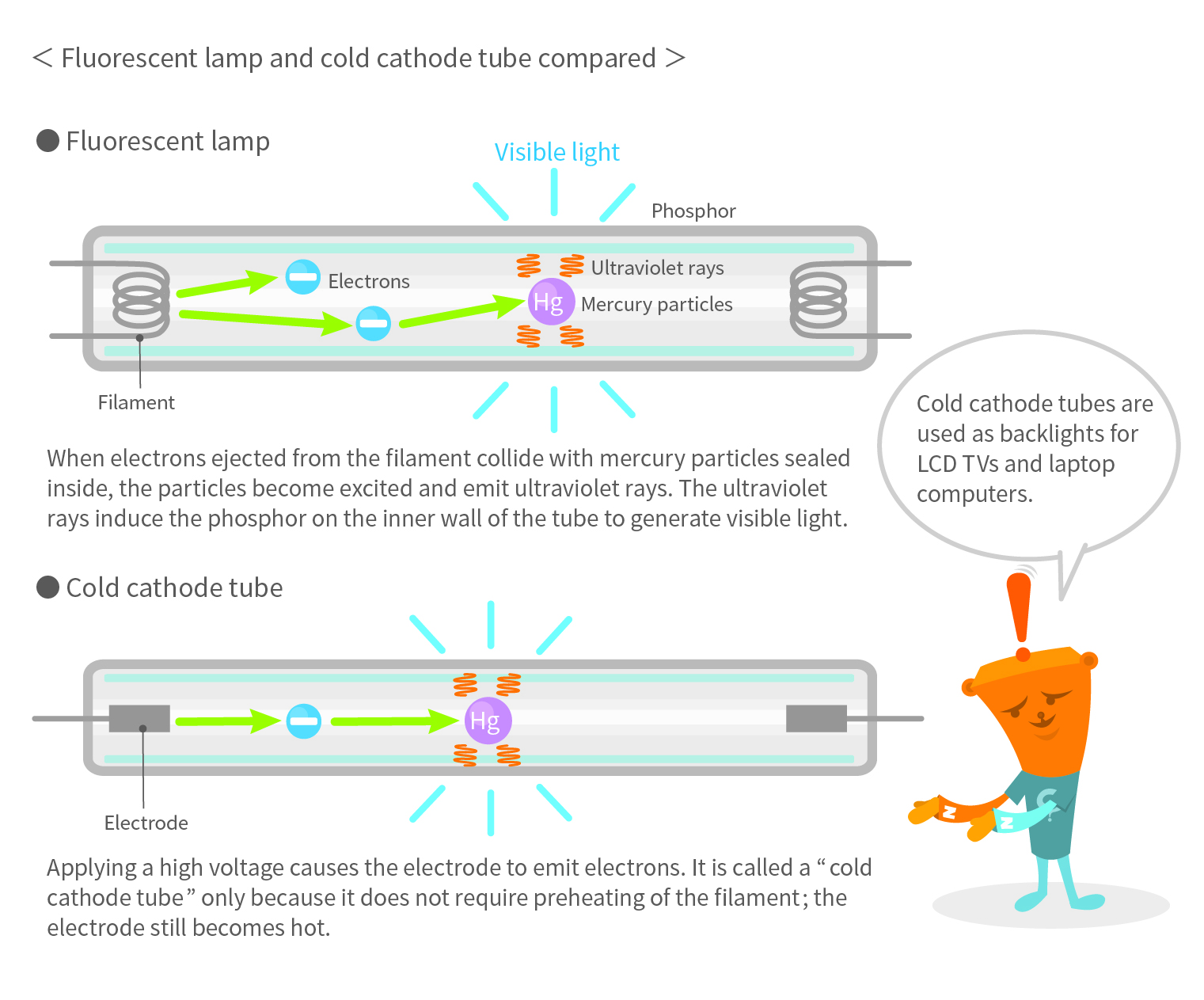
A special type of fluorescent lamp known as the induction (electrodeless) lamp has been developed in recent years. As the name suggests, they lack electrodes. Instead, they use coils to generate high-frequency electromagnetic field changes, which excite the mercury particles, inducing them to emit ultraviolet rays. The electrodeless design enables extremely long service life, making them suitable for lighting fixtures where lamp replacement is difficult.
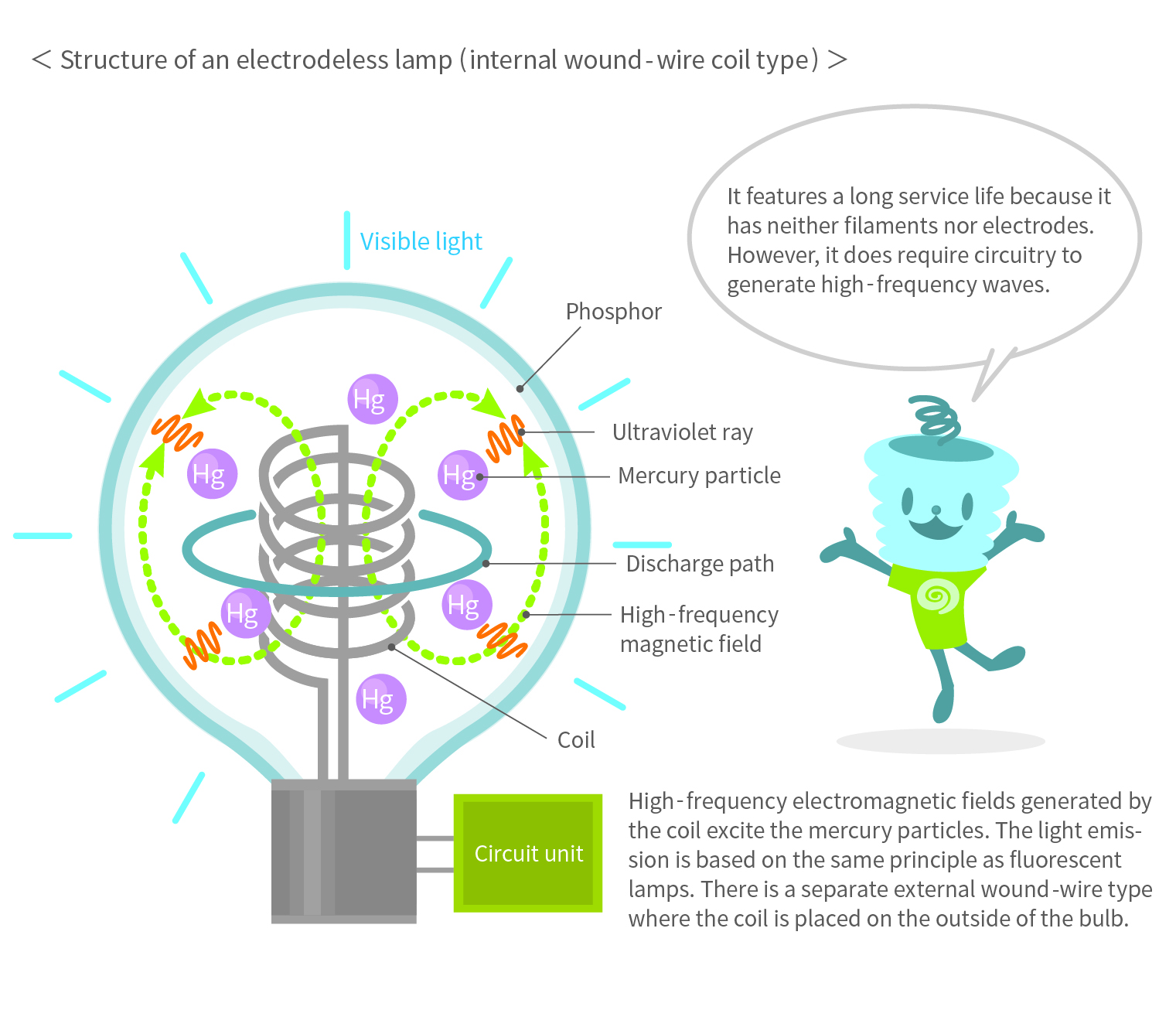
Side-mounted LEDs illuminate mobile phone screens
Following arc lamps, electric candles, incandescent lamps, vacuum tubes, and fluorescent lamps, the twenty-first century is witnessing the remarkable progress and widespread adoption of LEDs (light-emitting diodes). Their key advantages are low power consumption and long service lives.
White LEDs are used for the backlight of color LCDs (liquid crystal displays) in mobile phones. Unlike monochromatic light, what we perceive as white light actually comprises various wavelengths, as demonstrated by a prism breaking sunlight into the seven colors of the rainbow. Although white can be produced by bundling red, green, and blue (the three primary colors of light) LED chips, the type of white LED predominant today produces white by passing the light from a blue LED chip through a yellow phosphor. This is because mixing the blue and yellow lights produces a “pseudo-white” that is close enough to true white.
Despite the term “backlight,” the LEDs are not placed behind the display in mobile phones. Instead, to support thinner profiles, a technique known as edge lighting is used, where three or four white LEDs are mounted on the sides of the display. Brightness is kept uniform across the entire display using a sophisticated multi-layered structure that includes reflective sheets, light guide plates, and prism sheets that diffuse light evenly.
In recent years, OLED (organic light-emitting diode) displays have also gained increasing popularity. Because OLEDs themselves emit light when a voltage is applied, they do not require backlighting, contributing to the development of even lighter and thinner mobile phones.
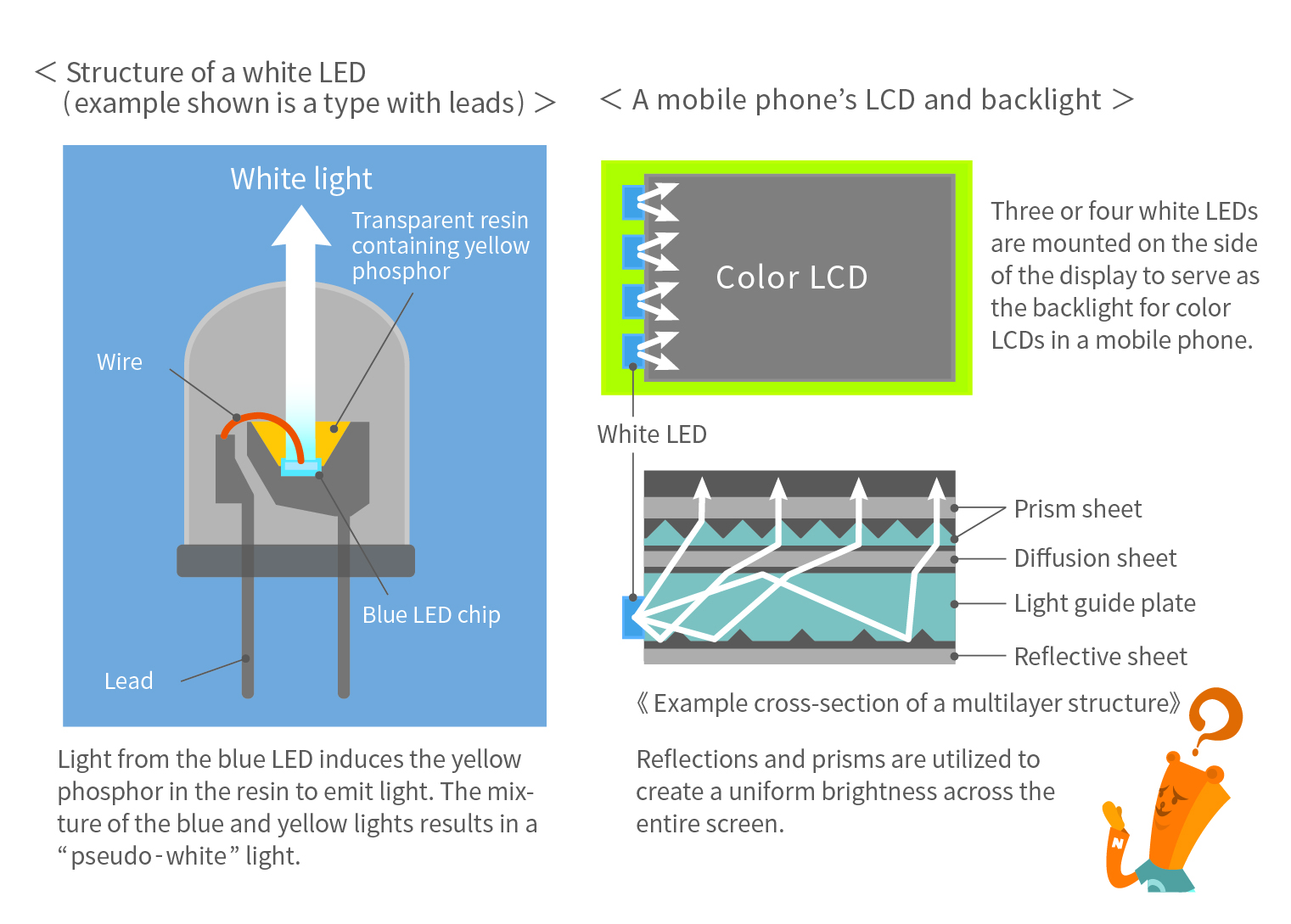
TDK’s industrial power supplies underpin the brilliance of ultra-large LED displays
LED-based displays, commonly found in stadiums, billboards, building exteriors, and signage at stations and airports, are large-format video devices that integrate lighting and video technologies. The imagery is formed by an enormous array of LEDs, which rely on AC-DC converters to draw electricity from the power grid. LED displays that combine RGB (red, green, and blue) LEDs to produce vibrant color images require conversions to optimal voltages for each RGB color in order to display them accurately. AC-DC converters perform these conversions. Power supply products from TDK-Lambda, a TDK Group company, offer high conversion efficiency and excellent reliability, leading the world in market share.
Electric lighting was created to illuminate the darkness of night, evolving through history to become brighter, longer-lasting, and more power-efficient. Electronics, which originated from lighting, continues to advance through digital and networking technologies, shining a hopeful light on various social issues.
TDK is a comprehensive electronic components manufacturer leading the world in magnetic technology




